3.2.4: Food- Let's Cook!
- Page ID
- 50042
Everyday Examples using Chemical Calculations
What do 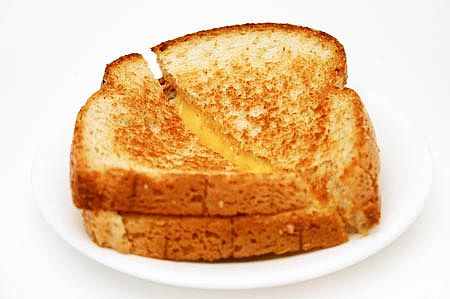 and
and 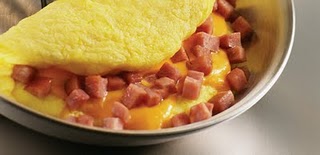 have to do with chemistry?
have to do with chemistry?
We often use a stoichiometry calculation in everyday life without even realizing it, especially while cooking, preparing a grocery list or building something!
You: "Stoichiometry? What is that?"
Me: "It's using unit conversions in order to answer a question."
You: "Oh, that's all? Besides not being able to pronounce the word very well, I thought it was some scary type of calculation."
Me: "Believe it or not, you've been doing these types of calculations for a long time already. It is just a bunch of unit conversions!"
The purpose of this page is to help you identify calculations you already use in your everyday life that you probably don't even realize you're doing.
Then once you recognize that you are in fact using the same calculations in your everyday life as in this chemistry course, hopefully this page will help you relate what you are "thinking" to what it looks like when you write it out as a math equation.
The thing that takes getting used to is how we can relate what we use every day to something that we are learning.
Read through these first three examples to get a feeling for how we actually use these calculations in our everyday life. Then move on to examples 4 and 5 to see how we relate these everyday calculations to chemistry.
If you get stumped on Examples 4 and 5, refer back to Examples 1, 2 and 3. Keep in mind that you will be using the EXACT same calculation, you are just replacing words like "eggs, ham, cheese, and cookies", with chemical names or chemical formulas. If you get confused, try replacing the words of a chemistry problem with more familiar words and see if that helps you learn these chemical calculations. For instance, you could replace NH3 with the word "egg" to help you feel more comfortable.
I want to have friends over for lunch on Saturday and make grilled cheese sandwiches that require two slices of bread and one slice of cheese. I open the refrigerator to find that I have 5 slices of cheese. I look in the bread box to find that I have 10 slices of bread.

How many sandwiches can I make?
Answer
These three steps are the first steps to solving this type of question, in chemistry, it is called a "stoichiometry" problem.
Step 1) Write out the recipe, also known as an equation
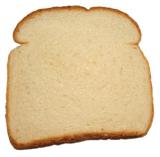
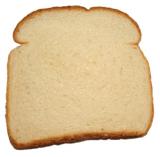 +
+  →
→ 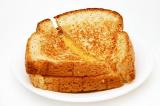
2 slices of bread + 1 slice of cheese → 1 grilled cheese sandwich
Step 2) Find Quantity (moles) and Identify useful unit conversions and/or molar ratios
What we know:
1) We know we have 5 slices of cheese
2) We know we have 10 slices of bread.
According to the equation written in step 1, ratios or unit conversions can be written by using the number in front of the ingredient, also known as a co-efficient.
2 slices of bread is required for one slice of cheese.
Remember, the powerful thing about ratios is that we can also write them "upside-down".
The following ratios or unit conversions that can be written from this equation are:
\(\begin{align} \frac{\text{1 slice of cheese}}{\text{2 slices of bread}}&=\frac{\text{2 slices of bread}}{\text{1 slice of cheese}} \\ & \\ \frac{\text{1 sandwich}}{\text{2 slices of bread}}&=\frac{\text{2 slices of bread}}{\text{1 sandwich}} \\ & \\ \frac{\text{1 sandwich}}{\text{1 slice of cheese}}&=\frac{\text{1 slice of cheese}}{\text{1 sandwich}} \\ \end{align}\)
Step 3) Use these ratios as a unit conversion to obtain the unit you are interested in
Before we start a calculation, let us visualize what we have to start with.
Can you tell by looking at the picture how many sandwiches we can make?You may even get an answer without even have to "think" about.
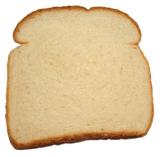














Let's re-organize this picture to represent the ratio that we determined in step 2.
Is it easier to see how many sandwiches we can make now?















Now that we have visualized this process, let's set up an equation to give us the same answer.
Remember, the purpose of this page is to help you identify calculations you do in your everyday life that you probably don't even realize you're doing.
If you did come to an answer in your head, this is what the equation looks like when written out.
\(\begin{align} & mol_{\text{sandwiches}}=\text{5 slices of cheese}\times \frac{\text{1 sandwich}}{\text{1 slice of cheese}}=\text{5 sandwiches} \\ & \\ & mol_{\text{sandwiches}}=\text{10 slices of bread}\times \frac{\text{1 sandwich}}{\text{2 slices of bread}}=\text{5 sandwiches} \\ \end{align}\) In this case it doesn't matter which one starting material or reagent that you start with. As long as you know the relationship or the ratio between what you are looking for and what you know, then you will always be able to come to an answer.















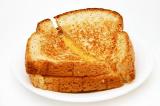




To re-cap the steps we used to solve this problem:
Step 1) Write equation
Step 2) Write or find moles
Step 3) Use molar ratio

You just volunteered to provide cookies for your school's bake sale. They ask you to bring 100 cookies. You go home and pull out this recipe from your recipe box.
Cookies Recipe - Ingredients
4 Tablespoons Unsalted Butter 1/3 Cup Brown Sugar 1/3 Cup White, Granulated Sugar 1 Egg 1 Cup All Purpose Flour 1 Tablespoon Cornstarch 1/2 teaspoon Baking Soda 1/4 teaspoon Kosher Salt Makes 20 cookies
You don't have any of the ingredients at home so we will need to go to the grocery store.
We need to make a list so we make sure to get enough ingredients to make 100 cookies.
Solution
Step 1
Write an equation.
We will use our recipe as our equation.
Step 2
Identify useful unit conversions.
If we used our recipe we could relate any one ingredient on the recipe to any other ingredient on the recipe. Similar to making sandwiches.
In chemistry terms this is called a molar ratio. A molar ratio is just a unit conversion. It allows us to get from what we know to what we want.
Another helpful unit conversion that I will highlight is the following: 1 recipe = 20 cookies
If we need 100 cookies, how many batches of cookies do we need to make?
You might have already answered five?
Step 3
Let's set up an equation using the unit conversions from Step 1 and 2,
\(batches_{\text{cookies}}=\text{100 cookies}\times \frac{\text{1 batch}}{\text{20 cookies}}=\text{5 batches}\) Now that I know how many batches of cookies I need, I can write my grocery list.
| Ingredients for one batch | Batches |
Total Amount |
|---|---|---|
| 4 Tablespoons Unsalted Butter | x 5 | 20 Tbsp Unsalted Butter |
| 1/3 Cup Brown Sugar | x 5 | 5/3 Cup Brown Sugar |
| 1/3 Cup White, Granulated Sugar | x 5 | 5/3 Cup White, Granulated Sugar |
| 1 Egg | x 5 | 5 Eggs |
| 1 Cup All Purpose Flour | x 5 | 5 Cups All Purpose Flour |
| 1 Tablespoon Cornstarch | x 5 | 5 Tbsp Cornstarch |
| 1/2 teaspoon Baking Soda | x 5 | 2.5 tsp Baking Soda |
| 1/4 teaspoon Kosher Salt | x 5 | 1.25 tsp Kosher Salt |
| Makes 20 cookies | x 5 | 100 Cookies |
To re-cap the steps we used to solve this problem:
Step 1) Write equation
Step 2) Write or find moles
Step 3) Use molar ratio
One of my favorite breakfast foods are cheese omelets in the morning. I am on a diet so I always measure the amount of each ingredient I use. I always make two in case someone else wants one. Below is the recipe for my 'perfect' omelet.
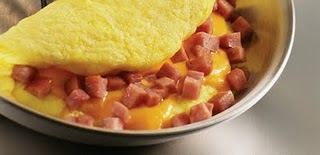
Recipe:
6 Large eggs - 200. g per one egg
1 cups of shredded cheese - 50. g per one cup
I open the refrigerator this morning to find an excess of large eggs and 250. g of cheese that is about to spoil.
- Question 1: How many eggs do I need if I want to use all of the cheese?
- Question 2: How many omelets can I make for breakfast with all of the ingredients I pulled out of the refrigerator?
- Question 3: What is the total mass of my cooked omelets?
Solution
Step 1) Write out the recipe in the form of a balanced equation
 |
+ | 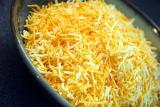 |
→ |  |
+ |  |
6 Large eggs + 1 cups of cheese → 2 omelets
Step 2) Find Quantity (moles) and Identify useful unit conversions and/or molar ratios
Unit Conversions
According to the equation written in step 1, these molar ratios can be written by using the number in front of the ingredient, also known as a co-efficient.
Once again, when you are first starting out, it is helpful to write the ratios or the stoichiometric ratios connecting all of the components of the recipe.
It makes it easier to pick out which one ratio you will use as a unit conversion to help you calculate what the question is asking.
As you can see, there are more molar ratios this time because there are more starting materials. Additionally, the question gave us information about the mass per unit food item. Therefore there are 8 unit conversions in this question.
| \(\frac{\text{6 Large eggs}}{\text{1 cups of cheese}}=\frac{\text{1 cups of cheese}}{\text{6 Large eggs}}\) | \(\frac{\text{1 cups of cheese}}{\text{2 omelets}}=\frac{\text{2 omelets}}{\text{2 cups of cheese}}\) | |
| \(\frac{\text{6 Large eggs}}{\text{2 omelets}}=\frac{\text{2 omelets}}{\text{6 Large eggs}}\) | ||
| \(\frac{\text{1 Large egg}}{\text{200. g egg}}=\frac{\text{200. g egg}}{\text{1 Large egg}}\) | \(\frac{\text{1 cup of cheese}}{\text{50. g cheese}}=\frac{\text{50. g cheese}}{\text{1 cup of cheese}}\) | |
| \(\frac{\text{2 omelet}}{\text{1250 g omelet}}=\frac{\text{1250 g omelets}}{\text{2 omelets}}\) |
We can determine the mass of 2 omelets by using the law of conservation of mass. Therefore, I will add the mass of 6 eggs and 1 cup of cheese to calculate the last unit conversion listed above.
 |
+ |  |
→ |  |
+ |  |
| 1200. g egg | + | 50. g cheese | → | 625 g omelet | + | 625 g omelet |
Find moles
In order for us to be able to compare the starting materials and answer question 2 and 3, we need to convert all of the starting materials from mass into the quantity associated with recipe or equation .
The actual quantity of cheese can be calculated using the mass per one unit of material. In this case, 1 cup of cheese is 50. grams.
In chemistry terms, this is called the molar mass. Molar mass can be used as a unit conversion. Refer above for useful unit conversions
To relate the idea of molar mass to everyday life is something we do all of the time without even thinking about it.
For instance, you have an assortment of candy in a bucket. Three kids come up to you and ask you for some candy.
Do you weigh the candy and give the three kids equivalent masses? No. That would be unrealistic and probably a little messy.
Instead, we just decide that one candy bar should be given to each kid. Kid #1 receives one Snickers bar, kid #2 receives one Milky Way and kid #3 receives one Kit Kat bar. They are all happy because they received their OWN candy bar; they don't care that one might weigh a little bit more than the other candy bars.
To summarize, Snickers, Milky Way, and Kit Kat all represent ONE candy bar, however they have different masses...but that's okay. To relate it even more to chemistry, one mole of any compound is equivalent to one mole of any other compound, they just have a different mass depending on what substance you are talking about; just substitute these words and you are back to our everyday example; 'mole' = 'candy bar' and 'compound' = 'type of candy bar'.
You can use this idea in reverse, if you know the mass, then the amount of candy bars or 'moles' can be calculated.
\(\text{ }mol_{\text{cheese (actual)}}=\text{250. g of cheese}\times \frac{\text{1 cup of cheese}}{\text{50. g of cheese}}=\text{5.0 cups of cheese}\)
Step 3 - Use Molar Ratio
Now that we know how much cheese we have, we can calculate how many eggs we need based on our recipe in Step 1. We can also calculate how many omelets we will make.
We can represent it visually before writing an actual calculation.
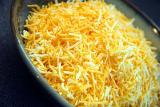




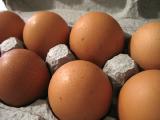
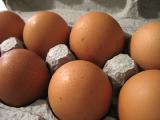













Based on these calculations, we just answered question 1 and 2. We will use 30 eggs from the refrigerator in order to use up all of the cheese in order to make 10 omelets.
We will need one more step in order to answer question 3, how much will all of our omelets weigh?
Step 4 - Convert to Answer
Let's find out how many 10 omelets will weigh using the useful unit conversion that we identified in Step 2.
\(\text{ }mass_{\text{omelet}}=\text{10 omelets}\times \frac{\text{1250 g omelet}}{\text{2 omelets}}=\text{6250 g of omelet made}\)
The thing that takes getting used to is how we can relate what we use every day to something that we are learning. If you get stumped on the next two examples, refer back to Examples 1, 2 and 3. Keep in mind that you will be using the EXACT same calculation, you are just replacing words like "eggs, ham, cheese, and cookies", with chemical names or chemical formulas. If you get confused, try replacing the words of a chemistry problem with more familiar words and see if that helps you learn these chemical calculations.
In the examples above you saw a lot of whole numbers. In chemistry you will be seeing more decimal numbers. Imagine that you could make 2.5 omelets and that is the same thing as producing or using 2.5 mol of a chemical substance.
Find the amount of water produced when 3.68 mol NH3 is consumed according to Equation \(\ref{3}\).
Solution
The amount of water produced must be in the stoichiometric ratio S(H2O/NH3) to the amount of ammonia consumed:
\(\large\text{S}\left( \frac{\text{H}_{\text{2}}\text{O}}{\text{NH}_{\text{3}}} \right)=\Large\frac{n_{\text{H}_{\text{2}}\text{O produced}}}{n_{\text{NH}_{\text{3}}\text{ consumed}}}\)
Multiplying both sides nNH3 consumed, by we have
\(\begin{align} \large n_{\text{H}_{\text{2}}\text{O produced}} &= \large n_{\text{NH}_{\text{3}}\text{ consumed}} \normalsize \times\text{S}\left( \frac{\ce{H2O}}{\ce{NH3}} \right) \\ { } \\ & =\text{3.68 mol NH}_3 \times \frac{\text{6 mol }\ce{H2O}}{\text{4 mol NH}_3} \\ & =\text{5.52 mol }\ce{H2O} \end{align}\)
This is a typical illustration of the use of a molar ratio as a conversion factor. Example 4 is analogous to Examples 1 and 2 from Conversion Factors and Functions, where density was employed as a conversion factor between mass and volume. Example 2 is also analogous to Examples 2.4 and 2.6, in which the Avogadro constant and molar mass were used as conversion factors. As in these previous cases, there is no need to memorize or do algebraic manipulations with Step 3 when using the molar ratio. Simply remember that the coefficients in a balanced chemical equation give molar ratios, and that the proper choice results in cancellation of units. In road-map form
\[\large \text{amount of X consumed or produced}\overset{\begin{smallmatrix} \text{stoichiometric} \\ \text{ ratio X/Y} \end{smallmatrix}}{\longleftrightarrow}\text{amount of Y consumed or produced} \nonumber \]
or symbolically.
\[\large n_{\text{X consumed or produced}}\text{ }\overset{S\text{(X/Y)}}{\longleftrightarrow}\text{ }n_{\text{Y consumed or produced}} \nonumber \]
When using stoichiometric ratios, be sure you always indicate moles of what. You can only cancel moles of the SAME substance. In other words, 1 mol NH3 cancels 1 mol NH3 but does not cancel 1 mol H2O.
The next example shows that stoichiometric ratios are also useful in problems involving the mass of a reactant or product.
The chemical reaction in this example is of environmental interest. Iron pyrite (FeS2) is often an impurity in coal, and so burning this fuel in a power plant produces sulfur dioxide (SO2), a major air pollutant.
Calculate the mass of sulfur dioxide (SO2) produced when 3.84 mol O2 is reacted with FeS2 according to the equation
\[\ce{4 FeS2 (s) + 11 O2 (g) → 2 Fe2O3 (s) + 8 SO2 (g)} \nonumber\]
Solution
The problem asks that we calculate the mass of SO2 produced. As we learned above in Example 3 - I'm on a Diet! and in Example 2 of The Molar Mass, the molar mass can be used to convert from the amount of SO2 to the mass of SO2. Therefore this problem in effect is asking that we calculate the amount of SO2 produced from the amount of O2 consumed. We will start this problem the same as in Example 4. It requires the molar ratio
Step 1 - Write an Equation
The equation was given to us in the question.
Step 2 - Identify Unit Conversions & Find Moles
Unit Conversions
The question is asking us about the amount of SO2 produced from the amount of O2 consumed so I want both of those substances in the molar ratio.
\(\frac{\text{8 mol SO}_{\text{2}}}{\text{11 mol O}_{\text{2}}}=\frac{\text{11 mol O}_{\text{2}}}{\text{8 mol SO}_{\text{2}}}\)
The question is also asking about the mass of SO2, so I want to write the molar mass.
\(\frac{\text{1 mol SO}_{\text{2}}}{\text{64.06 g SO}_{\text{2}}}=\frac{\text{64.06 g SO}_{\text{2}}}{\text{1 mol SO}_{\text{2}}}\)
Find Moles
The problem gives us the amount of oxygen gas in moles, so we do not need to use the molar mass equation like we did in Example 3 - I am on a Diet!
Step 3 - Use Molar Ratio
The amount of SO2 produced is then
\(\begin{align} n_{\text{SO}_{\text{2}}}\text{ produced}&=n_{\text{O}_{\text{2}}\text{ actual}}\text{ }\!\!\times\!\!\text{ conversion factor} \\n_{\text{SO}_{\text{2}}}\text{ produced}&=\text{3}\text{.84 mol O}_{\text{2}}\times \frac{\text{8 mol SO}_{\text{2}}}{\text{11 mol O}_{\text{2}}}=\text{2}\text{.79 mol SO}_{\text{2}}\text{ produced} \end{align}\)
Step 4 - Convert to Answer
The question is asking about the mass of SO2 not the amount of SO2. We can use the unit conversion or molar mass written in Step 2.
The mass of SO2 is
\(\begin{align} \text{mass}_{\text{SO}_{\text{2}}}&=\text{2}\text{.79 mol SO}_{\text{2}}\times \frac{\text{64}\text{.06 g SO}_{\text{2}}}{\text{1 mol SO}_{\text{2}}}=\text{179 g SO}_{\text{2}} \end{align}\) With practice this kind of problem can be solved in one step by concentrating on the units. The appropriate stoichiometric ratio will convert moles of O2 to moles of SO2 and the molar mass will convert moles of SO2 to grams of SO2. A schematic road map for the one-step calculation can be written as \(mol_{\text{(O}_{\text{2}}\text{)}}\text{ }\xrightarrow{ratio\text{(SO}_{\text{2}}\text{/O}_{\text{2}}\text{)}}\text{ }mol_{\text{(SO}_{\text{2}}\text{)}}\text{ }\xrightarrow{M.M._{\text{SO}_{\text{2}}}}\text{ }mass_{\text{(SO}_{\text{2}}\text{)}}\) This is how the equation would look if it were all done in one step:
\(\text{mass}_{\text{(SO}_{\text{2}}\text{)}}=\text{3}\text{.84 mol O}_{\text{2}}\times \text{ }\frac{\text{8 mol SO}_{\text{2}}}{\text{11 mol O}_{\text{2}}}\text{ }\times \text{ }\frac{\text{64}\text{.06 g}}{\text{1 mol SO}_{\text{2}}}=\text{179 g}\)
Notice that all of the units that are the same on the top and the bottom of the ratios can cancel, leaving just the units that you want at the end.


